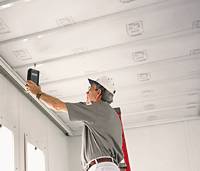Breathing Air Testing
 Managed Air Systems works with you, our customers, to assure the safety, health and welfare of people who depend on clean supplied breathing air. We provide analysis of Grade D & Grade E breathing air as well as other industrial hygiene analysis. All sampling is performed by fully trained and certified technicians.
Managed Air Systems works with you, our customers, to assure the safety, health and welfare of people who depend on clean supplied breathing air. We provide analysis of Grade D & Grade E breathing air as well as other industrial hygiene analysis. All sampling is performed by fully trained and certified technicians.
Supplied breathing air must meet the requirements for Type 1 gaseous air described in the Compressed Gas Association Commodity Specifications G-7.1 (Grade D or higher quality), and referenced by Federal Law 30 CFR, Part II, Subpart J, 11.121(b).
Operator breathing air systems are required to meet OSHA standards for Grade D breathable air.
There are many reasons for testing your breathing air:
- Compressors generate contaminants which can enter the breathing air.
- Carbon monoxide and/or hydrocarbons can be drawn into the compressor intake from nearby operations (e.g. forklifts, delivery trucks, process exhausts).
- If an installation contractor has filled the system with nitrogen to braze or conduct a pressure test, the percentage of oxygen should be checked before the system is put into service.
- Repairs, maintenance and other activities can introduce contaminants (e.g. oil, solvents) into the respirator system.
Managed Air Systems can help to assure you, our customer, that your breathing air system meets the Federal requirements stated in 30CFR11.121(b): "Compressed, gaseous breathing air shall meet the applicable minimum grade requirements for Type I gaseous air set forth in the Compressed Gas Association Commodity Specification for Air, G-7.1 (Grade D or higher quality)."
To assure consistently high-quality breathing air, we recommend quarterly testing (4 times a year), to ensure it meets the required specifications. For this purpose, Managed Air Systems can provide the following breathing air tests:
- Grade D Breathing Air
- Grade E Air
Gas capture and analysis: – Call For Pricing (860) 325-2087
- Gas sample by MAS personnel
- Gas sample analysis
- Particulate sample by MAS personnel
- Particulate sample analysis
Paint Shop Analysis
– Airborne Contamination – Airflow Design – EPA, OSHA & State Compliance –
In addition to testing the supplied breathing air, Managed Air Systems provides a variety of other assessments, including airborne contamination testing to analyze particulate matter that can lead to imperfections in paint finishes and airflow testing to determine the source of contamination, or to study poor airflow. Through our comprehensive analysis we can help your paint facility achieve the proper contamination-free airflow to assure class A paint finishes.
Managed Air Systems is also an expert in compliance. We provide peace of mind when compliance is in question by making sure all OSHA, EPA and state guidelines are met. Through our analytical process, we will test cabin airflow, stack velocity, filtration requirements and installation conditions. Then we will work with you to educate your operators and management team on proper maintenance and inspections procedures to keep your paint shop performing at peak efficiency while staying in compliance.
At the completion of every investigation, Managed Air Systems provides a final air quality and compliance report containing an analysis of the findings, copies of laboratory results and our recommendations.
Testing, sampling & compliance services include:
- Grade of Air Quality
- Carbon Dioxide
- Carbon Monoxide
- Temperature Control
- Relative Humidity
- Particulate Matter
- Moisture Testing
- OSHA & EPA Compliance
The 10 most common causes of contamination:
- Poor utilization of process control when preparing the sub straight for painting
- Poor surface preparation and inability to see contamination on the surface
- Booth environment not properly balanced or pressurized
- Poor and/or uneven velocity around sub straight
- Low airflow or movement around the sub straight
- Chemical wipe fibers left on or in the surface
- Poor quality of “tack” or preparation wipes
- Poor quality of paint filtration equipment or supplies
- Contamination found within paint booth due to poor maintenance
- Operators or painters not properly dressed for painting






